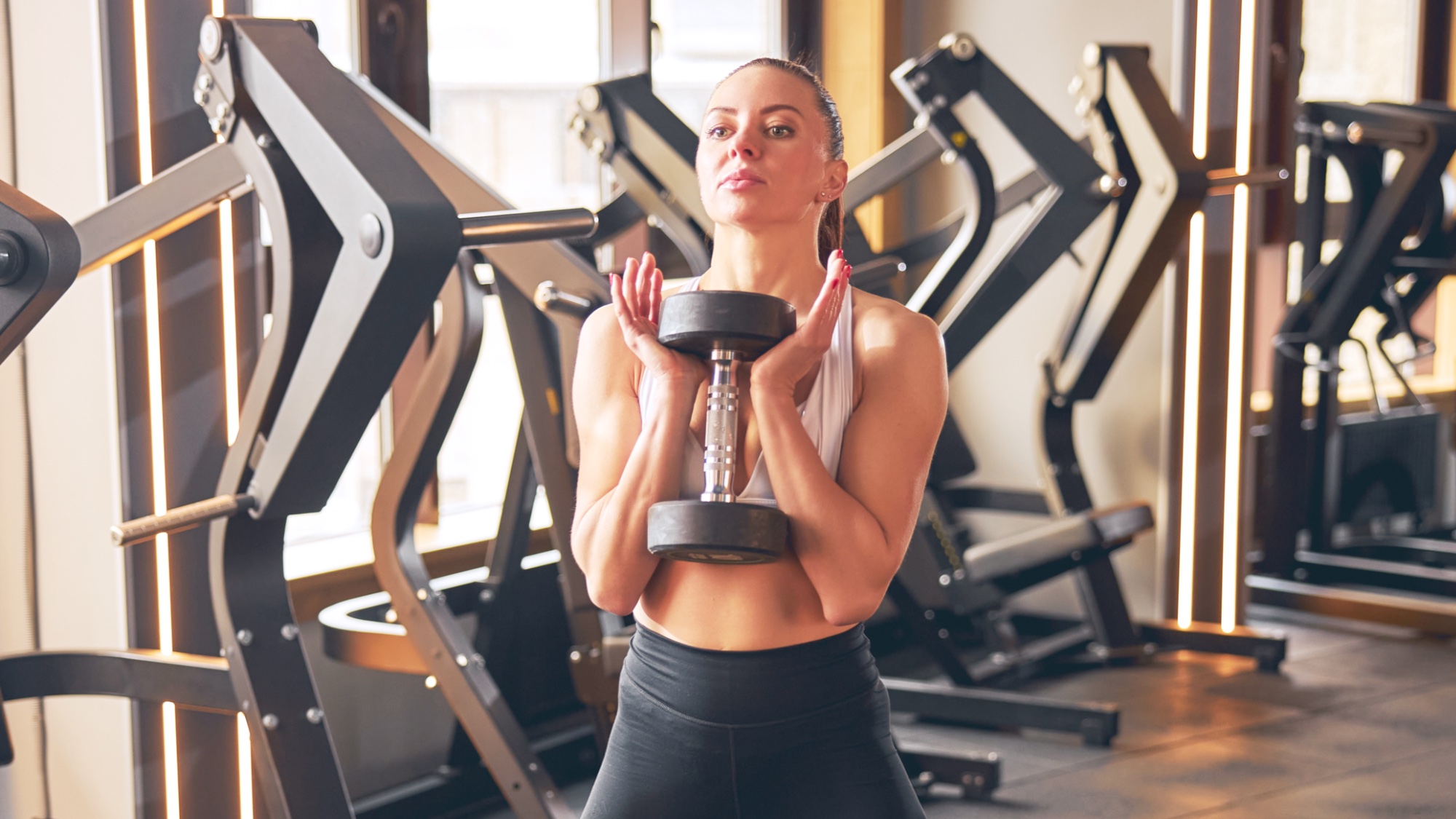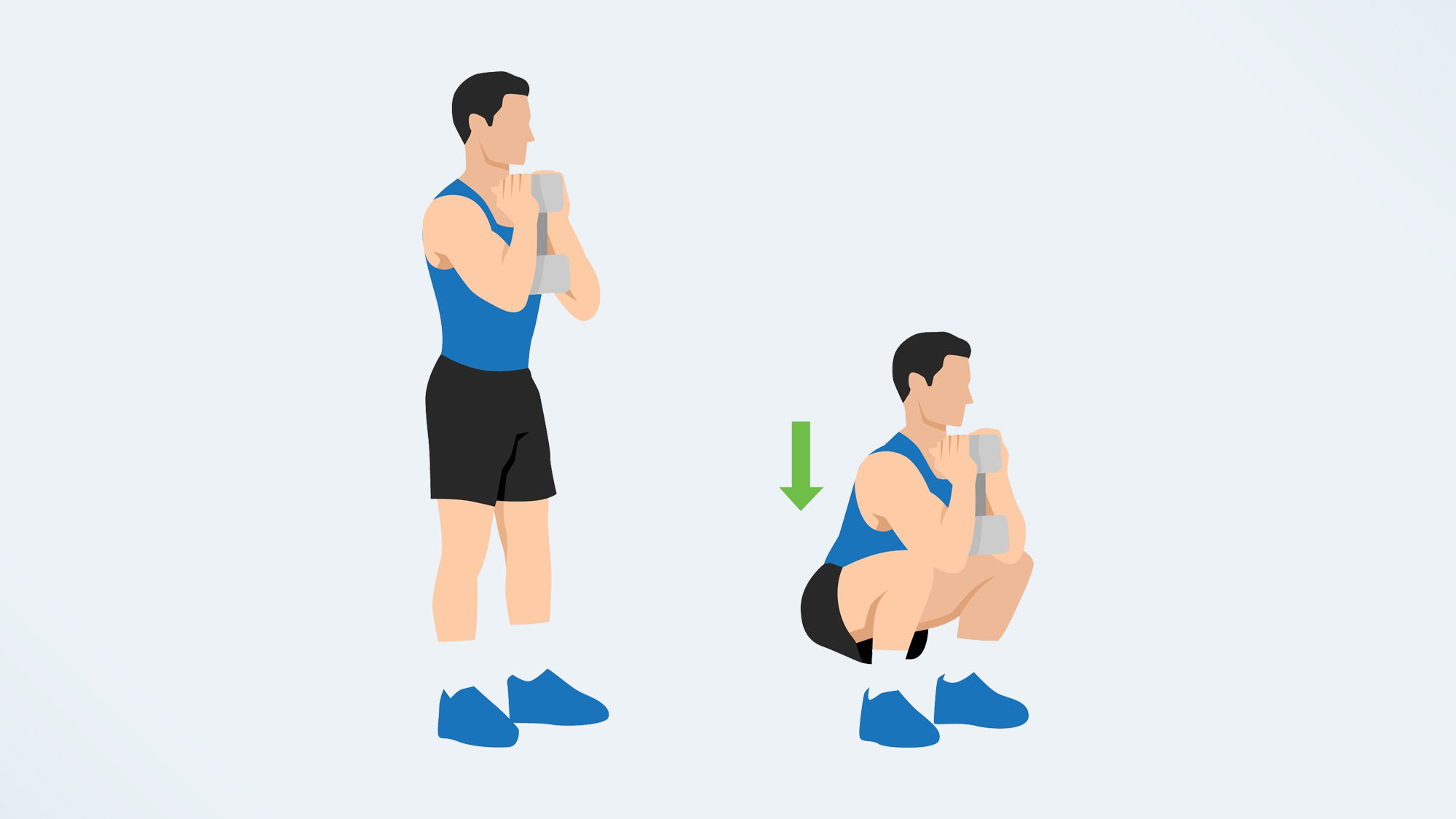I did 100 goblet squats every day for a week — here’s what happened

As a fitness editor, there’s nothing I love more than taking a deep-dive into an exercise — next-up on my list of weird and wonderful challenges: goblet squats. Goblet squats are a full-body exercise that work your quads, glutes, calves, core, and arm strength, as you’ll be using one of the best adjustable dumbbells, or a kettlebell during the move. But what would happen if I did 100 a day for a week? Read on to find out more.
It goes without saying that 100 reps of anything are a lot. If you’re new to exercise, or you’re returning to exercise following an injury, it’s a good idea to speak to a personal trainer or a doctor before taking on a workout challenge. You also want to ensure that you’re moving with the right form to avoid putting yourself at risk of injury.
How to do a goblet squat
A goblet squat is the same as a regular squat, but with the addition of a heavy weight, held in front of your chest. To do a goblet squat, get into your normal squat position — with your feet slightly wider than hip-width apart, and your core engaged. Hold a dumbbell or kettlebell against your chest, holding it with both hands, like a goblet. Brace your core, and squat down, sitting back into your heels and keeping your chest up. Drive through your heels to raise back into your starting position.
When selecting the right weight for you, find one that feels challenging by the final few reps, but not impossible, or like you have to compromise your form to finish your reps. It’s always a good idea to start with a lower weight, then increase it as you go.

I did goblet squats every day for a week — here’s what I learned
The move worked my abs and my core
This is definitely an exercise that gives you a lot of bang for your buck. After my first few days of 100 reps, I could feel the endless squats in my glutes, hamstrings, and my core. During this move, as the weight is on your body's front, your core must work hard to keep your body stable.
A strong core is far more than just an aesthetic goal — it can help you lift weights, run faster, and sit with better posture. It can also help protect your spine from injury and reduce lower back pain. If visible abs are your goal, endless goblet squats won’t do it — instead, you’ll need to get down to a low body fat percentage. Here’s how to calculate your body fat percentage, and why it matters.
It’s totally different to a sumo squat
I often tend to stick to sumo squats in my lower body workouts, as I find they work my legs harder. After a few days of goblet squats, I found that adding weights totally transformed this simple-looking move. At the beginning of the week I grabbed a 15 pound dumbbell and got squatting, yet as the week went on, I tried to increase the weight a little each day, even if this was just for my final set of 25 squats.
Get instant access to breaking news, the hottest reviews, great deals and helpful tips.
Compared to barbell squats, I found that by holding the weight on my chest allowed me to sink slightly lower into my squat, working my glutes harder.
It was easy to up the ante
As well as increasing the weight of the dumbbell used, it was easy to up the ante of this move by moving slower. On day four, when the squats started to get boring, I’d squat down for a beat of four seconds, then raise back up in one. My personal trainer friend told me this helped me increase my time under tension, which would, in turn, help me work my muscles harder.
If goblet squats are too difficult, you can simply lower the weight.
I found raising my heels gave me a greater range of motion
As a runner, and someone who spends an awful lot of time sitting down behind a laptop, I have incredibly tight hip flexor muscles. As a result, I find it difficult to really sit low into the squat. To help, I raised my heels off the floor onto a weight plate. This allowed me to squat down much lower, and work my legs much harder — I wished I hadn’t found this modification on day five, as it really transformed the move.
Of course, a week isn’t anywhere near long enough to build muscle or make any visible changes to your body. That said, I did find on the days I added goblet squats to my pre-run warm-up I found it easier to engage my glutes as I ran — something, like a lot of runners, I struggle with. I’ll definitely be adding these to my leg day routine in the future, just not 700 of them!
Looking for more workout inspiration? Here’s how to build muscle in your legs and glutes with a set of dumbbells, plus a 7-move kettlebell workout that helps you build bigger legs.

Jane McGuire is Tom's Guide's Fitness editor, which means she looks after everything fitness related - from running gear to yoga mats. An avid runner, Jane has tested and reviewed fitness products for the past five years, so knows what to look for when finding a good running watch or a pair of shorts with pockets big enough for your smartphone. When she's not pounding the pavements, you'll find Jane striding round the Surrey Hills, taking far too many photos of her puppy.
